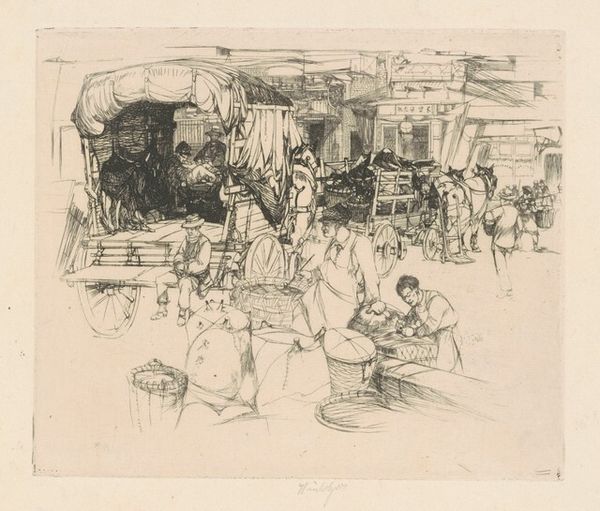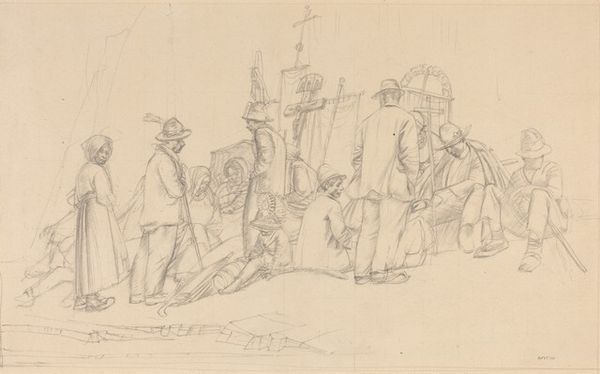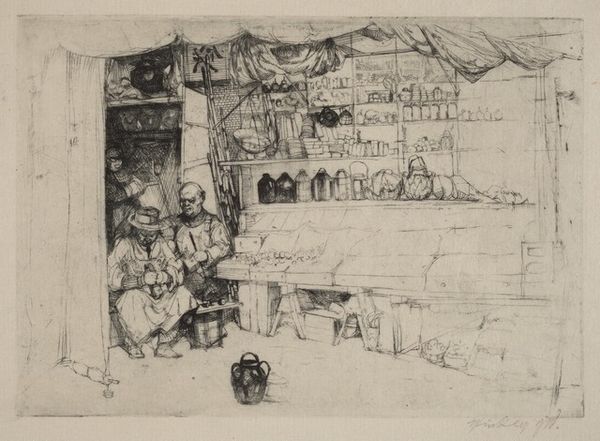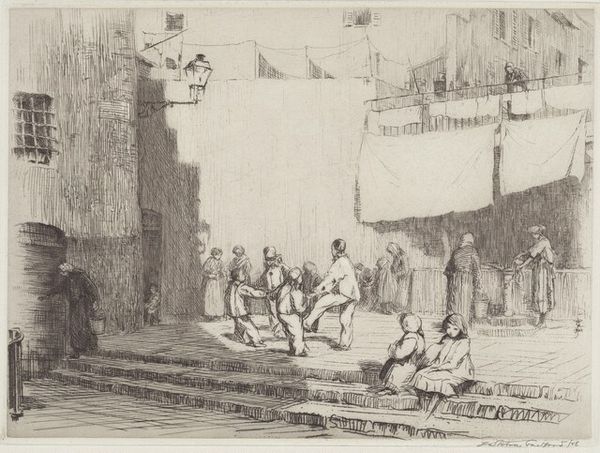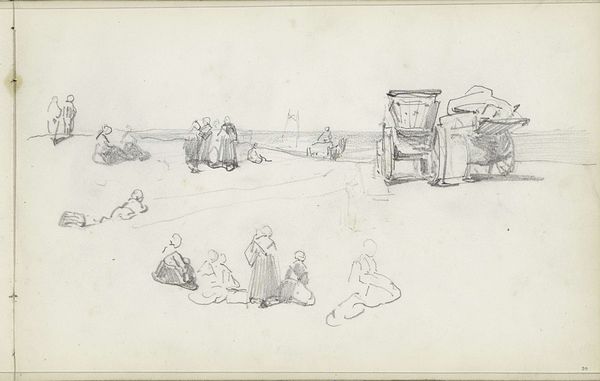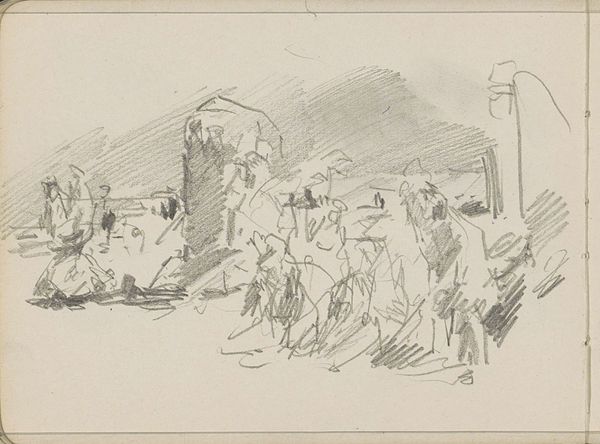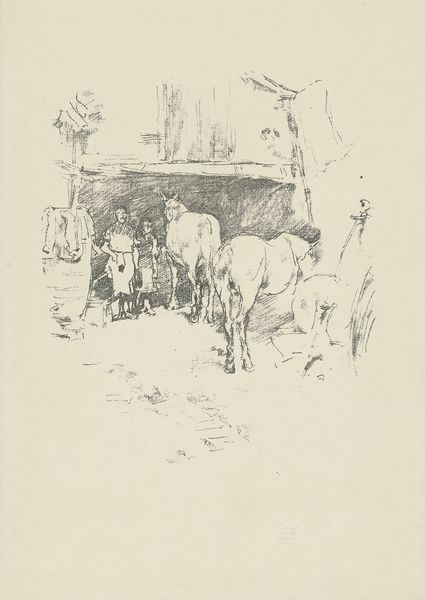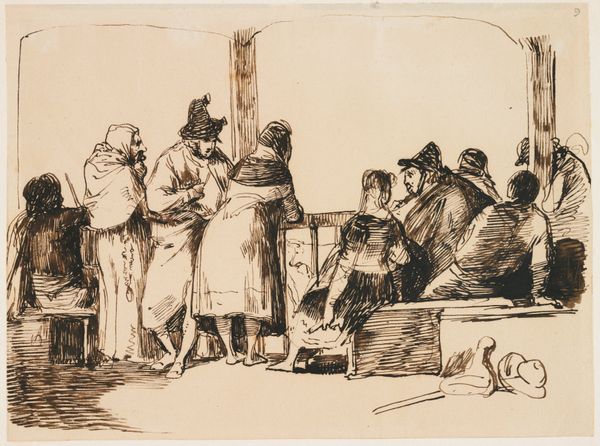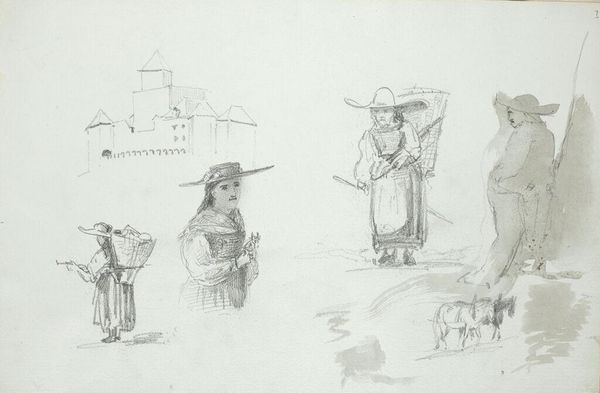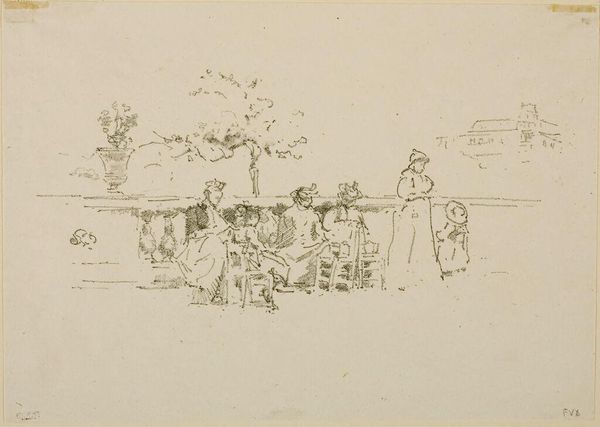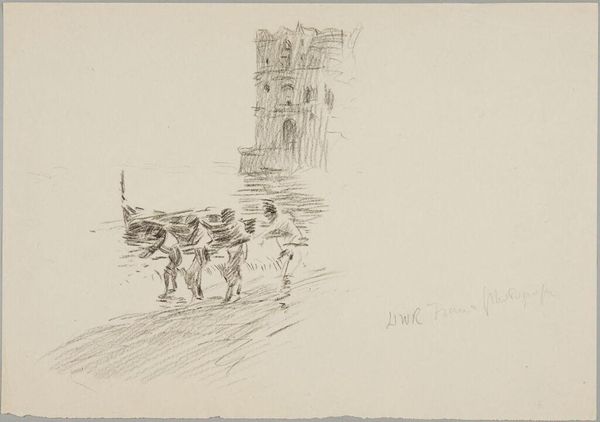
drawing, ink, pen
#
drawing
#
pen sketch
#
figuration
#
ink
#
orientalism
#
line
#
pen
#
cityscape
#
genre-painting
#
realism
Dimensions: overall (approximate): 21.5 x 26.9 cm (8 7/16 x 10 9/16 in.)
Copyright: National Gallery of Art: CC0 1.0
Editor: So, this is James McBey's "Fishmarket," from around 1913, created using pen and ink. It's a pretty straightforward depiction of a market scene. It has an almost ethnographic feel. How do you interpret this work, especially considering its date? Curator: The "ethnographic feel" you identify is crucial. Given its creation around 1913, we need to view this piece through the lens of Orientalism, a Western perspective that often exoticized and essentialized non-Western cultures. The quick sketch captures the ‘Oriental’ city as a place of busy commerce. Do you think the artist's choice of medium, the quick pen sketch, reinforces or challenges this potential objectification? Editor: That’s a good point. The sketch-like quality does feel… detached, somehow. It’s like he’s quickly capturing an exotic scene rather than engaging deeply with it. Is the focus just on commerce important, ignoring other nuances? Curator: Precisely. We should examine how the artist positions himself in relation to his subject. Where does he stand, culturally and socially, and how does that impact his depiction? Notice the absence of individual detail in the figures. This flattening reinforces stereotypes and power dynamics inherent in Orientalist portrayals. It’s an exercise of power isn't it, a claiming of a place by depiction? Editor: It's making me think about who this artwork was *for*. Was it meant to inform or to titillate? Was McBey actively perpetuating stereotypes, or simply working within the visual language of his time? Curator: These are excellent questions. Considering the work in its historical context allows us to understand not only the artist's intentions, conscious or unconscious, but also the broader societal attitudes towards "the other." The prevalence of this gaze speaks volumes about the imbalance of power at the time. Editor: So, what starts as what seems like a straightforward street scene is actually loaded with complex social and political meaning! Curator: Exactly! By engaging with the artwork through intersectional lenses, like Orientalism and power dynamics, we unlock a deeper understanding of its significance and its legacy. The rapid pen strokes speak volumes, if you let them.
Comments
No comments
Be the first to comment and join the conversation on the ultimate creative platform.
